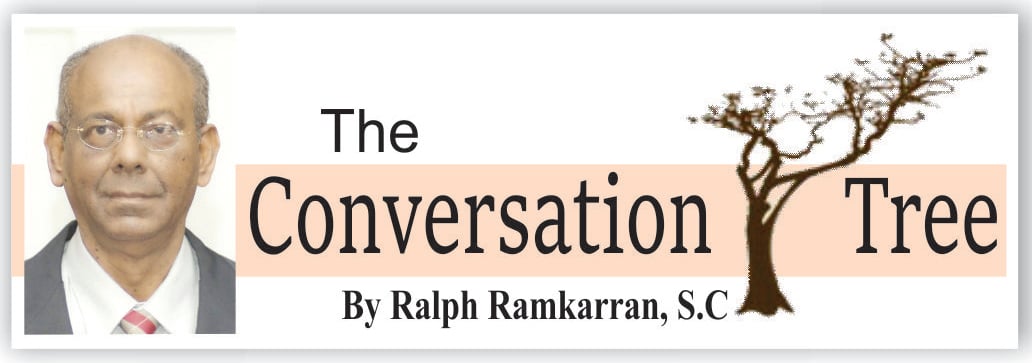Some weeks ago, the Chief Justice found that the Local Content Secretariat, a regulatory agency, had wrongly refused to issue a Local Content Certificate to Ramps Logistics. The Chief Justice ordered that the certificate be issued within a week. Two weeks ago, Justice Sandil Kissoon found that the Environmental Protection Agency (EPA), also a regulatory agency, had breached its statutory duty in failing to ensure EEPGL’s compliance with condition 14 of the Environmental Permit (Renewed) to obtain an unlimited liability guarantee from the parent company or an affiliate company. The Judge gave the EPA five days to issue the required notice to EEPGL under the EPA Act. There was no appeal in the Ramps Logistics case. The appeal in the EPA case will determine if Justice Kissoon was right.
The remedies invoked by the Applicants in both cases are ancient. They originated in England and were well established by the 17th century. The main remedies, which are invoked by citizens, to ensure that tribunals lawfully perform their functions in order to protect their rights, came down to us in their Latin names – certiorari, prohibition and mandamus to respectively quash an order, prohibit the making of an order and compel the making of an order.
As the number and range of tribunals, statutory bodies and public authorities, (collectively referred to as “public authorities”) grew in the 20th century, so did the importance of the remedies in protecting citizens. In about 1966 the UK entrenched into legislation the rights and remedies in what is now called public law. On a parallel track the courts continued to extend its reach. ‘Legitimate expectation,’ a phrase now in everyday use, was devised to compel public authorities to give a hearing to the other side. The doctrine was later expanded into ‘substantive legitimate expectation’ under which a public authority which makes a promise to do, or not to do, an act, will be required to uphold that promise.
Public authorities dominate public administration worldwide and affect the lives of most citizens in numerous and profound ways. There are dozens in Guyana which affect major industries such as mining, petroleum and rice in West Berbice and also everyday activities such as housing, the delivery of water and electricity. Guyana eventually followed the example of many other countries and codified judge-made public law into the Judicial Review Act of 2010. Among the 18 grounds on which section 5 of the Act permits a court to act is “breach of or permission to perform a duty.” ‘Breach of duty’ was the core issue in the EPA case presided over by Justice Kissoon.
Upon the decision being given, the Government, not a party to the case, criticised the decision and announced that it would appeal, an unhealthy merger of the Government’s interests with that of an independent public authority. The Government’s announcement of an appeal, and the EPA’s subsequent appeal, are being criticized. However, the EPA has an untrammeled right of appeal, and to ask the court of appeal to suspend the high court’s decision pending the hearing and determination of the appeal. The EPA is exercising a right provided by law and that exercise should be respected. Today, the scrutiny by the courts in cases seeking the public law remedies mentioned above, occur every day. Citizens rely on the powers of the court to protect their rights against decisions of public authorities. The decisions in many of these cases are appealed by one side or the other.
The comment on Justice Kissoon’s judgment to the effect that the judiciary is treading in murky waters by directing a regulatory agency on how to do its job and setting a timeframe on when it should complete certain orders, is not an informed comment. It contradicts to its core the purpose of public law and the objective of the Judicial Review Act, which is precisely to direct regulatory agencies by issuing public law orders and setting timeframes as indicated below.
Under section 14 of the Act, where a public authority fails to make a decision, the time for which is not prescribed, a person affected by the delay may apply for judicial review, that is, for one or more of the orders outlined above, as in the EPA case. Section 15 provides that a public authority is required, if asked in writing by a person adversely affected by one or more of the orders that it has issued, to provide its findings on questions of fact, the evidence on which those findings are based and the reasons for its decision and must do so within 14 days. This is the extent of the penetrating intrusiveness into the functioning of public authorities that courts are given.
The growing importance of the rights of the citizen is reflected by many factors. But in relation to the issues under discussion, two factors are important to note: 1. The exponential rise in the number of public law and constitutional law cases in Guyana, and; 2. The extension of the locus standi principle thereby enabling members of the public who may be only marginally or indirectly affected by a decision, sometimes by merely being citizens of Guyana, to institute legal proceedings in public law and constitutional cases.






